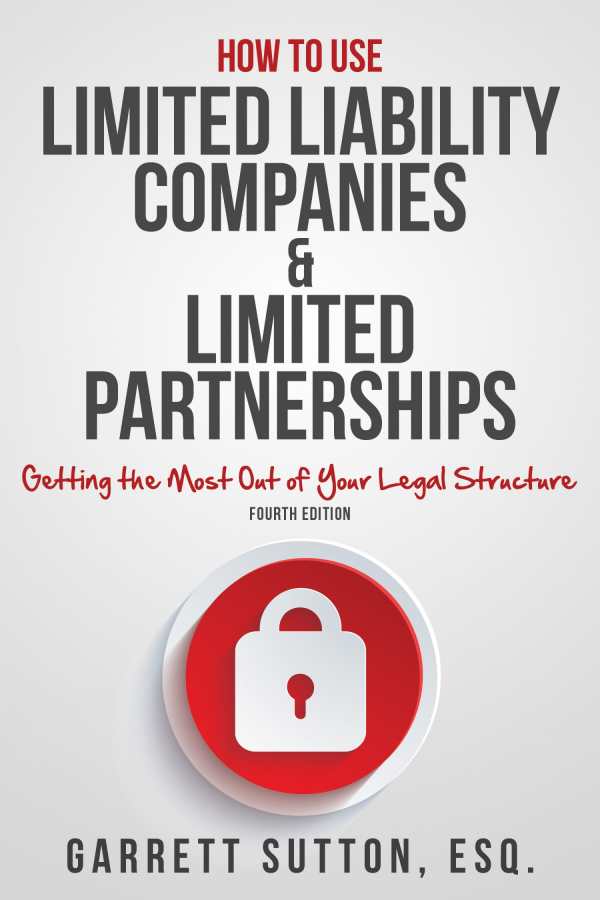How to Use Limited Liability Companies & Limited Partnerships
Getting the Most Out of Your Legal Structure
Garrett Sutton’s book is a valuable resource for anyone contemplating the formation of an LLC or LP.
How to Use Limited Liability Companies & Limited Partnerships by Garrett Sutton is an authoritative guide to making the best use of two specialized legal forms of business.
The rapid growth of self-employment and small business brings with it an important requirement: entrepreneurs must understand how to legally protect their business entities and their personal assets. This is why limited liability companies (LLCs) and limited partnerships (LPs), forms of business that are easier to establish and less complex than traditional corporations, have become very popular.
Sutton is an attorney who specializes in corporate law. This fourth edition of his useful guidebook offers a comprehensive look at virtually every element of using LLCs and LPs. The book covers the technicalities of entity selection, formation, management, and taxation, as well as the implications of such corporate structures on the protection of assets, acquiring real estate, intellectual property, joint ventures, and estate planning.
Also covered are contingencies that may seem unpleasant but should be fully understood if not anticipated, including dissolving an entity, bankruptcy, and special situations such as divorce, in the case of an LLC or LP owned by a married couple.
Two features of the book make it stand out from a basic legal briefing. First, there are numerous cases woven throughout the text to illustrate specific business situations. This brings relevant and meaningful examples to what could be an otherwise dry topic. Second, for most of the chapters, the author employs a “Frequently Asked Questions” technique that makes it easy to scan the text and pinpoint areas of interest—an engaging way to explain the subject matter.
A chapter regarding asset protection offers real insights into the topic, employing examples of how to defer attacks from claimants against such corporate structures; Sutton also explains the different actions that creditors might take within certain “weaker” and “stronger” states.
The author’s in-depth knowledge and extensive experience with business owners differentiate this book from others. The information contained here is extremely valuable for anyone concerned about using LLCs and LPs to protect business and personal assets.
While some of the material necessarily contains legalese, for the most part, the book is written in clear, cogent everyday language augmented by helpful examples.
For anyone contemplating the formation of an LLC or LP, Sutton’s book is a valuable resource.
Reviewed by
Barry Silverstein
Disclosure: This article is not an endorsement, but a review. The publisher of this book provided free copies of the book and paid a small fee to have their book reviewed by a professional reviewer. Foreword Reviews and Clarion Reviews make no guarantee that the publisher will receive a positive review. Foreword Magazine, Inc. is disclosing this in accordance with the Federal Trade Commission’s 16 CFR, Part 255.

